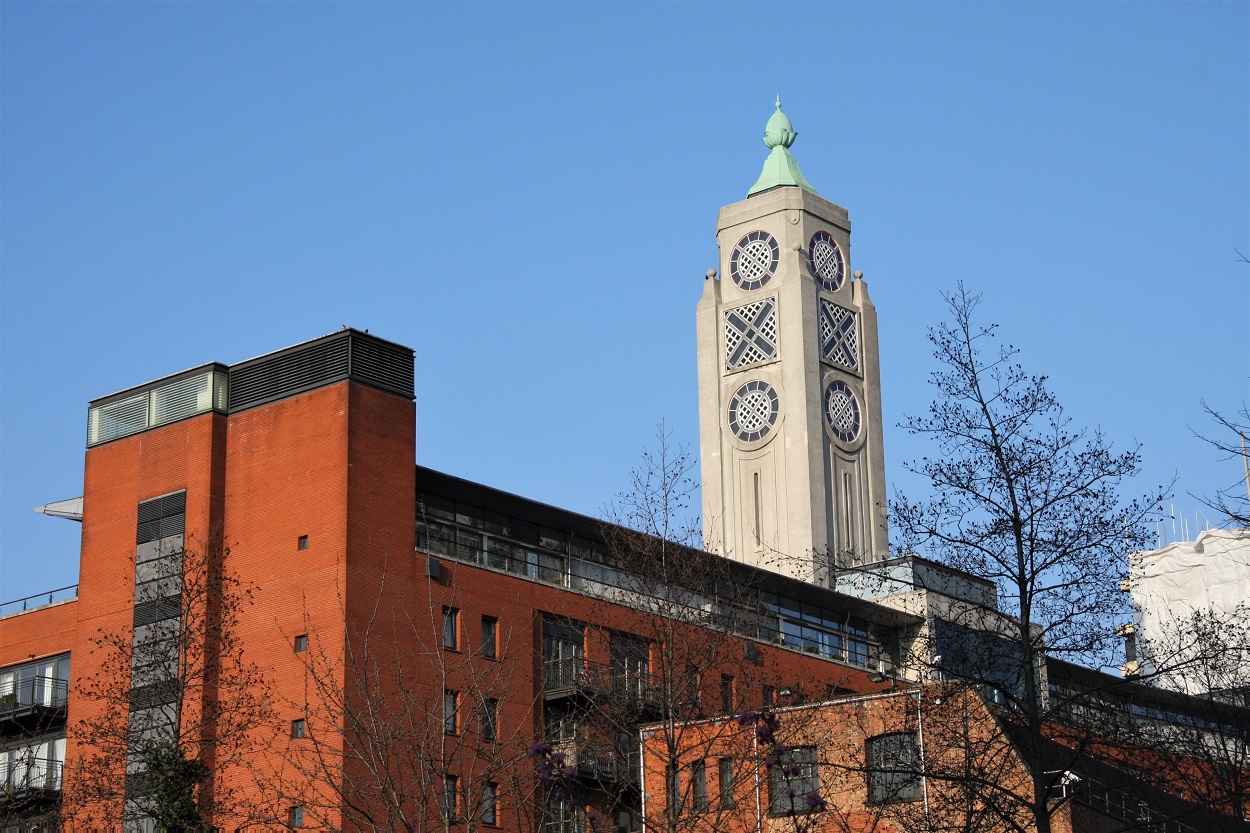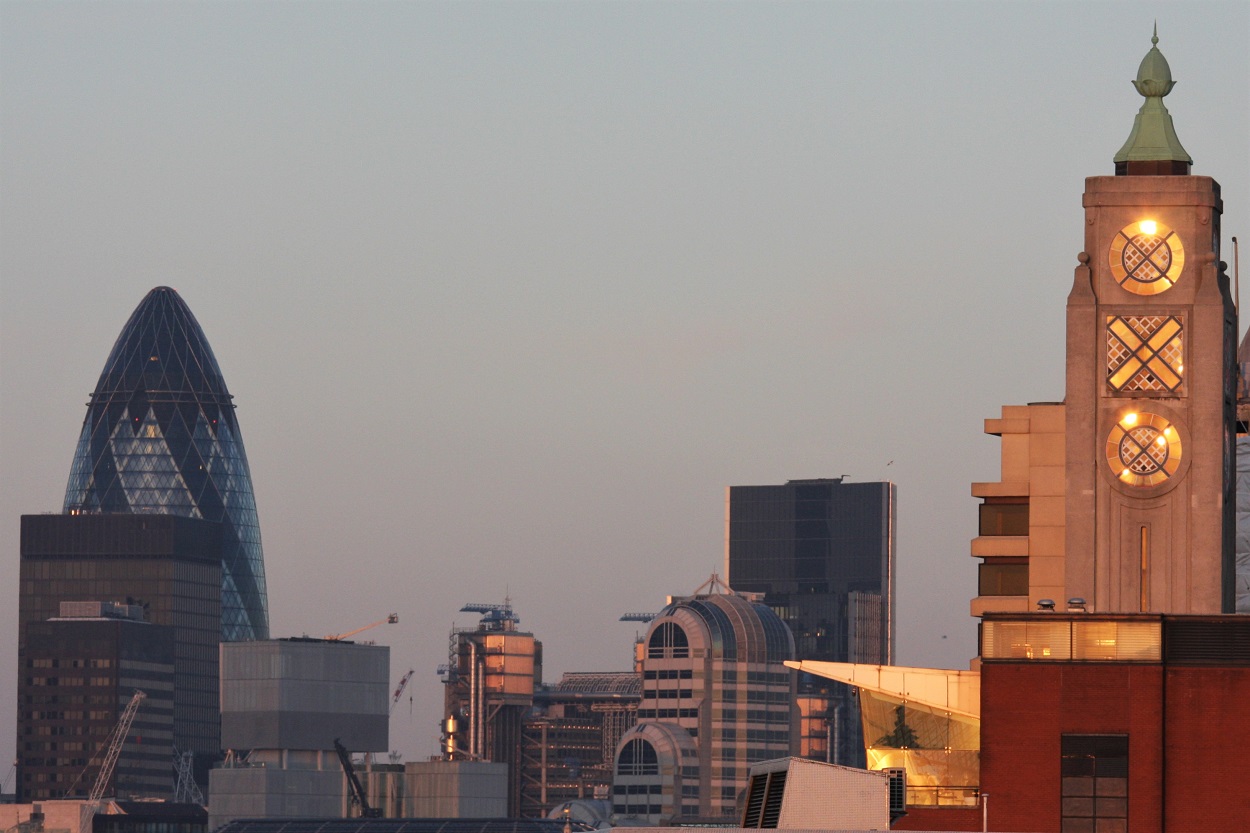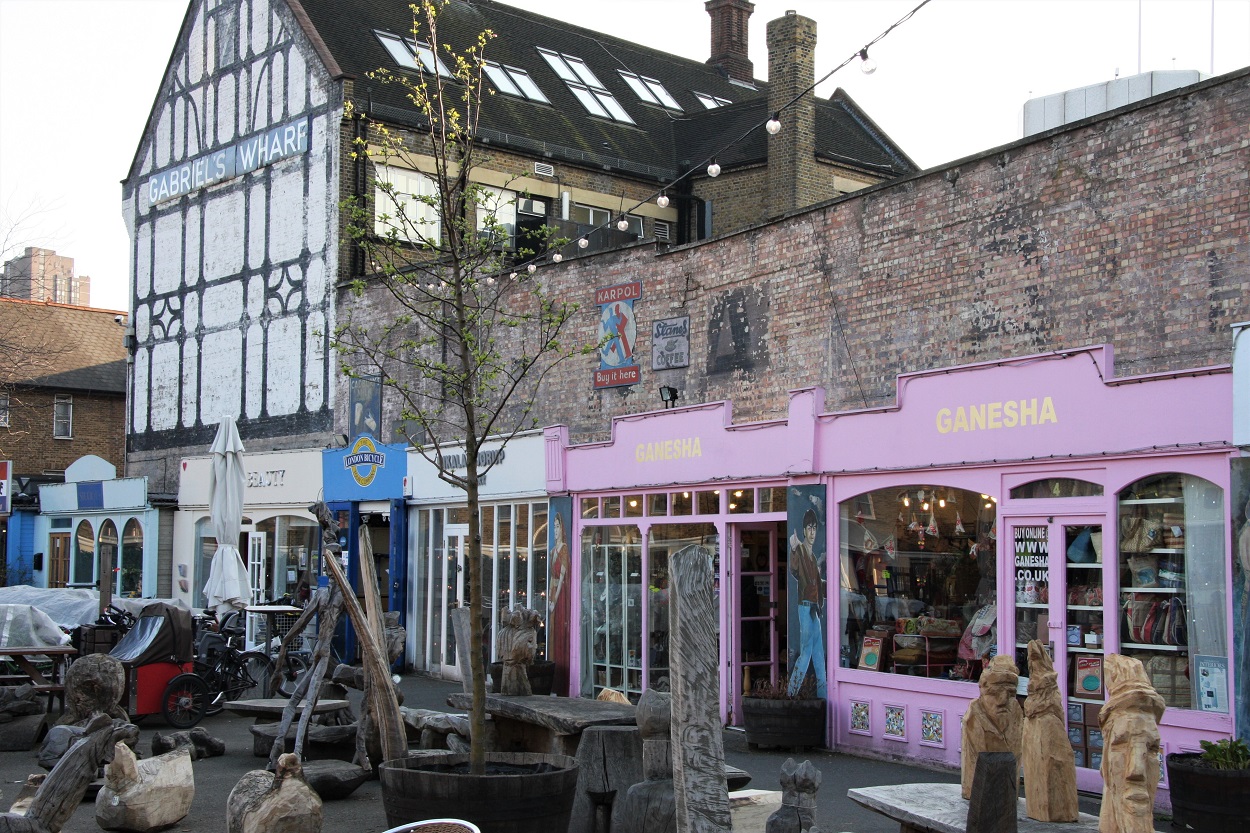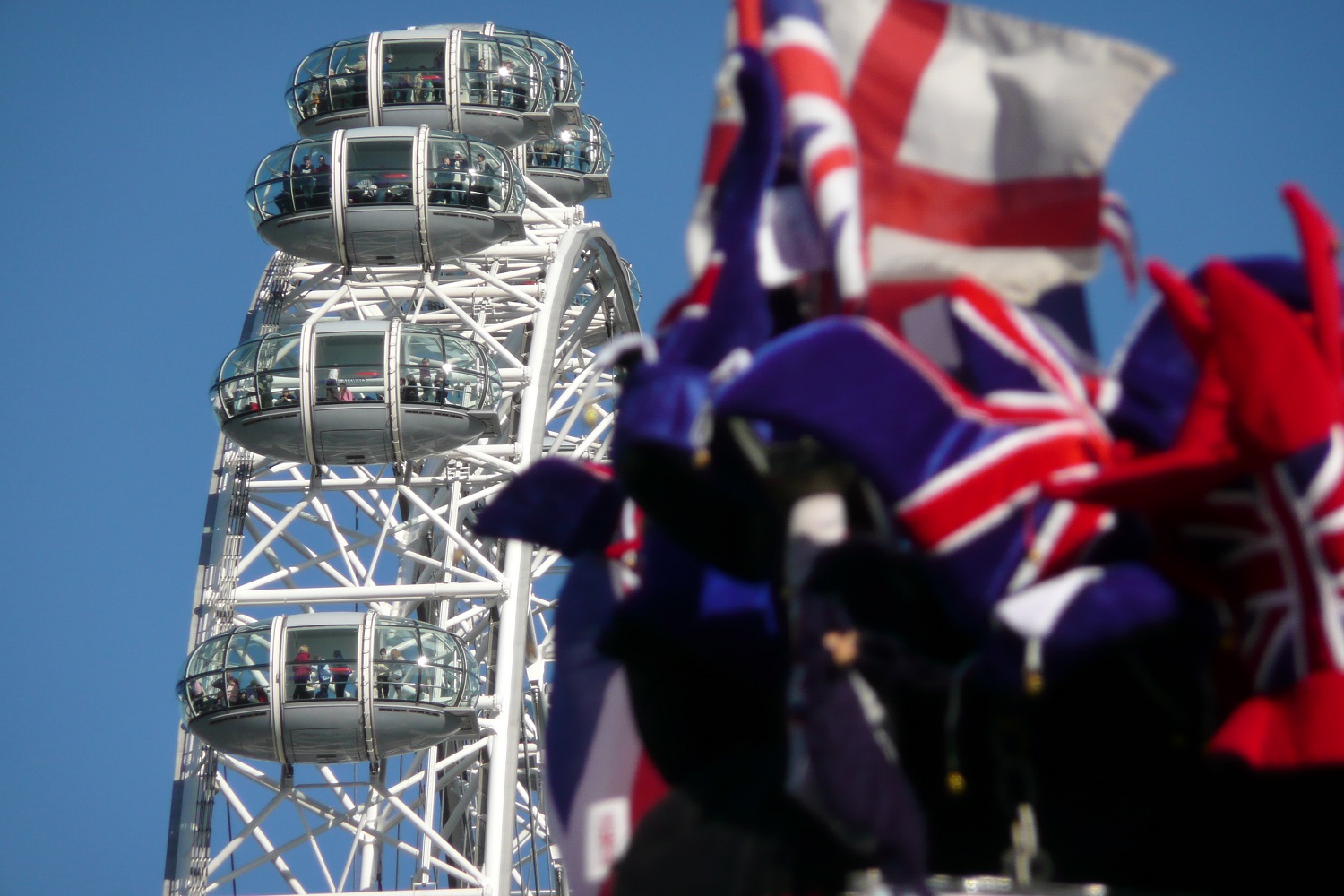 OXO Tower and Gabriel's Wharf
OXO Tower and Gabriel's Wharf
The OXO Tower and Gabriel’s Wharf on The Queen’s Walk are two repurposed Southbank sites next to the river Thames which have been saved from modern developments. The area around the tower and Coin Street contains eclectic businesses, design studios, historical landmarks, shops, restaurants and cafes.OXO building now contains an array of interesting design studios, shops, galleries and restaurants.
OXO Tower
Originally constructed as a power station for the Royal Mail in the late 19th century the OXO building was purchased for cold storage by the Liebig Extract of Meat Company, famous for its OXO (oxen) beef cube.In the 1920s the building was remodelled to an Art Deco design, but permission to display illuminated signs advertising the name of their product was denied.
Three 10 foot O-X-O windows, light shines out from within.
Four sets of three vertically-aligned 10 foot windows, two circular and one in the shape of a cross were built into the tower. With light shining through them from inside the, the word OXO was emblazon across the Thames, so getting around the advertising ban.
Today the site belongs to the non-profit making Coin Street Community Builders who redeveloped and refurbished the Tower and surrounding wharf to include rooftop restaurant, shops and exhibition space.
Gabriel Pier site 16th Century dock for the Royal Barge.
Barge House Street behind the OXO Tower and the wharf date back to the 16th Century when King James I used the site to store the Royal barge. The King regularly travelled on the river Thames between the Royal Palaces of Windsor, Westminster and Hampton Court. Walk into Gabriel’s Pier for a paralimbic view of London.
Gabriel's Wharf, an eclectic collocation of design shops, galleries, cafes.
Gabriel's Wharf
Gabriel's Wharf is an eclectic collocation of design shops, galleries, cafes and restaurants next to the river Thames. Rejuvenated from old garages in the late 1980’s it is now popular with both locals and tourists.Part of the Coin Street Community, the design shops at Gabriel's Wharf are run by small businesses that design, manufacture and sell their own products. To provide an appropriate backdrop the blank walls of the surrounding building has been painted to blend in.
Visitor Infomation
OXO Tower has a restaurant and brasserie on the top floor with panoramic view of London. Gabriel's Wharf open all year round.Further information:
OXO Tower - Restaurant
Gabriel's Wharf, Coin Street

